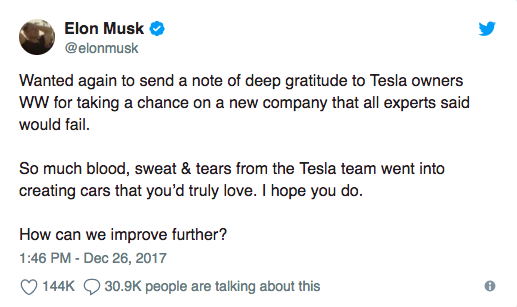
5 signs that it’s time to stop validating and start building
In most areas of our lives, it’s easy to tell if you’re on the right track. At school: did you pass the class? At work: did you get the promotion? There are clear yes-or-no answers, and someone tells you when you’re ready to move forward.
But when you make the leap into entrepreneurship and start immersing yourself in market research, all of that clarity goes away.
You spend months talking to potential customers, learning about their burning pains, trying to see how your solution fits in. After a while, you start to wonder: “Am I done now? Is this really a good idea? Can I start building it now?”
And because this isn’t school, or a 9-to-5 job, there’s no one whose job is to tell you, “Yes.”
So how do you know when you can stop researching and start building your business?
Here are five signs that you’re ready to move on — plus an explanation of why the idea of being “done” with immersion is flawed to begin with.
1. Conversations with contacts are just confirming what you already know
At its core, immersion is about diving into your target audience’s world and finding the hidden patterns that connect people. You’ll know you’re onto something when you start seeing those patterns everywhere in your conversations with potential customers.
As IWT, student Dan Hinz says, you may find yourself getting a little bored because everything sounds so familiar:
“I found that I was finding the interviews boring because I was answering the questions in my head … and my answers were exactly what the interviewees were saying. That’s when I realized, ‘Okay, I get it.'”
If this happens to you, that’s a great sign! It means you’re starting to deeply understand your customer. Time to move on to the next stage and learn something new.
2. Your questions provoke an emotional response
Here’s a quick quiz. Below are two columns with two different kinds of responses you might hear when you describe your idea to people. Which of these columns is more likely to result in a successful business?
| Column A | Column B |
| “I guess that’s kind of annoying.” “I hadn’t really thought about it, but I guess you’re right.” “Sure, I guess that’s something I might consider buying.” | “UGH, yes, that’s such a huge problem for me.” “Why isn’t there an easier way to do this?” “I’ve been trying to figure this out for FOREVER.” |
If you picked Column B, congratulations — you win!
The best business ideas solve a deep, emotional problem that customers face — that means they provoke a deep, emotional response when people hear that you have a solution.
One of our product developers put it best: “Excitement is a great sign. Apathy is not.”
3. You have 100 people on your email list (at least)
The ultimate validation for your idea doesn’t come until you’ve actually built a product and people start paying for it. But there’s a parallel in the immersion phase: when people value your insight and expertise enough that they’re willing to let you into their inbox by subscribing to your email list.
Having coached thousands of entrepreneurs, we’ve noticed that the businesses that go on to be successful after immersion have a few things in common on this front:
- They have at least 100 people subscribed to their email list
- They get at least 50 website visitors per day, with a 10-15% opt-in rate
These are good benchmarks to aim for in your business as well. If you haven’t yet hit them, it’s a good sign that your message isn’t resonating yet, and you should stay in immersion, so you can learn how to better connect with your audience.
4. You’re constantly coming up with ideas that solve your audience’s burning needs
One of my all-time favorite quotes about writing comes from the late, great essayist Nora Ephron: “Everything is copy.” What it means is that everything you see is fuel for a story — or a product.
Say you’re talking to college students about their challenges with career development:
You hear: “I don’t even know what skills I need to get the job I want.”
You think: A blog post about how to read job descriptions and understand what employers are looking for.
You hear: “I know I’m supposed to reach out to alumni and do informational interviews, but I don’t know what to say.”
You think: A template students can use to do email outreach, and a script they can follow when they land an interview.
As an entrepreneur, your job is to (1) Listen to your audience’s problems and (2) Give them solutions. When you start hearing problems and you know you have a solution in mind, it’s time to get to work on making that solution happen.
5. People are already asking you to help them
Sometimes you get to decide when you’re done with immersion. Sometimes, you don’t get the chance — because your customers decide for you.
We’ve heard from numerous students who have had people request to become customers long before the students thought they were ready to sell. It happened to Rice Lean founder Leslie Chen when she started hosting meetups as a way to better understand what professional women were looking for in a weight loss program. And it happened to Sam Gavis-Hughson, founder of Byte by Byte, when he posted a message about nailing job interviews in a Facebook group for computer programmers.
People get nervous about taking on customers before they’re officially “out” of the immersion phase. They worry that it’s a fluke, or that they haven’t really earned it. But if customers are willing to pay you — before you even have an official product to sell — it means that your message has connected. You’ve found the problem, and people want the solution that you offer. That’s the definition of “validated.”
You may be done with immersion — but immersion is never done with you
Moving past the immersion phase and into building your product is scary. As long as you’re just doing research, you can tell yourself you’re thinking about starting a business. It’s low pressure. But when you’re actually building products and publishing blog posts and sending emails to your growing subscriber list — there’s no “thinking” about starting a business at that point. You’re doing it.
Two things to remember that might help manage the anxiety when you do decide to take the leap out of the immersion nest:
You can go back
There’s no gate that gets slammed behind you when you move past immersion. No one’s going to say, “Sorry, you’re done. Can’t come back.” If you start working on your products and you realize that something is not quite right, or there are unanswered questions lingering in your head, you can always hit pause, circle back, and get more information. That’s allowed. Really.
You don’t stop learning
Learning from your customers doesn’t stop once you leave the quote-unquote immersion phase. In fact, it kicks into overdrive.
Sam Gavis-Hughson explains:
“I don’t think you really figure out what people want until you’re selling to them. I launched my first course recently and the only reason that I chose to do that course was that I had gotten probably a hundred emails from people I’d coached saying, ‘Help me with this thing,’ because I was out there doing all this stuff, and people trusted me enough to ask me to help them with their problem.”
The knowledge you gain during immersion doesn’t have to last you for the rest of your business-building life. You can, will, should keep learning new things from your customers for years after your first conversations with would-be customers are a distant memory.
Immersion isn’t a stage, it’s a mentality — a mentality that the best entrepreneurs keep practicing as long as they’re building products. It’s why Jeff Bezos says he loves “divinely discontent” customers. And why Elon Musk sends out tweets like this:

In other words: if you’re waiting for someone to tell you you’re done learning from your customers, you’ll be waiting a long, long time. Start building anyway.
Want to build a business that enables you to live YOUR Rich Life? Get my FREE guide on finding your first profitable idea.
Host of Netflix’s “How To Get Rich” NYT Bestselling Author, & Host of the I Will Teach You To Be Rich Podcast. I’ll show you how to take control of your money with my proven strategies so you can live your RICH LIFE.
Written by Ramit Sethi
Host of Netflix’s “How To Get Rich” NYT Bestselling Author, & Host of the I Will Teach You To Be Rich Podcast. I’ll show you how to take control of your money with my proven strategies so you can live your RICH LIFE.



